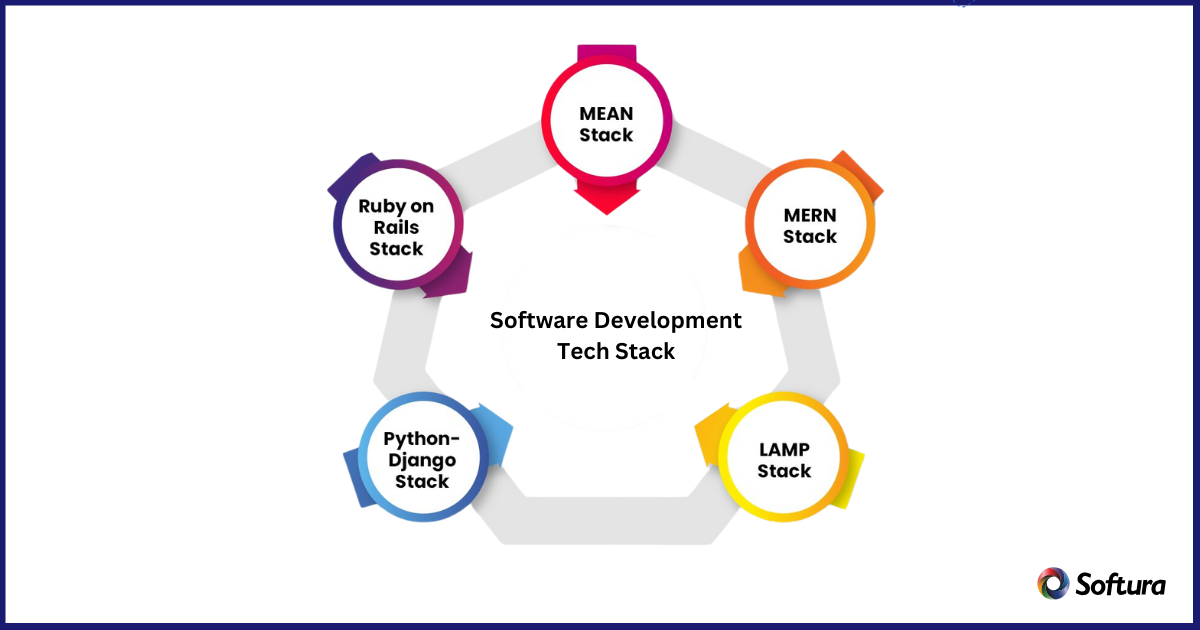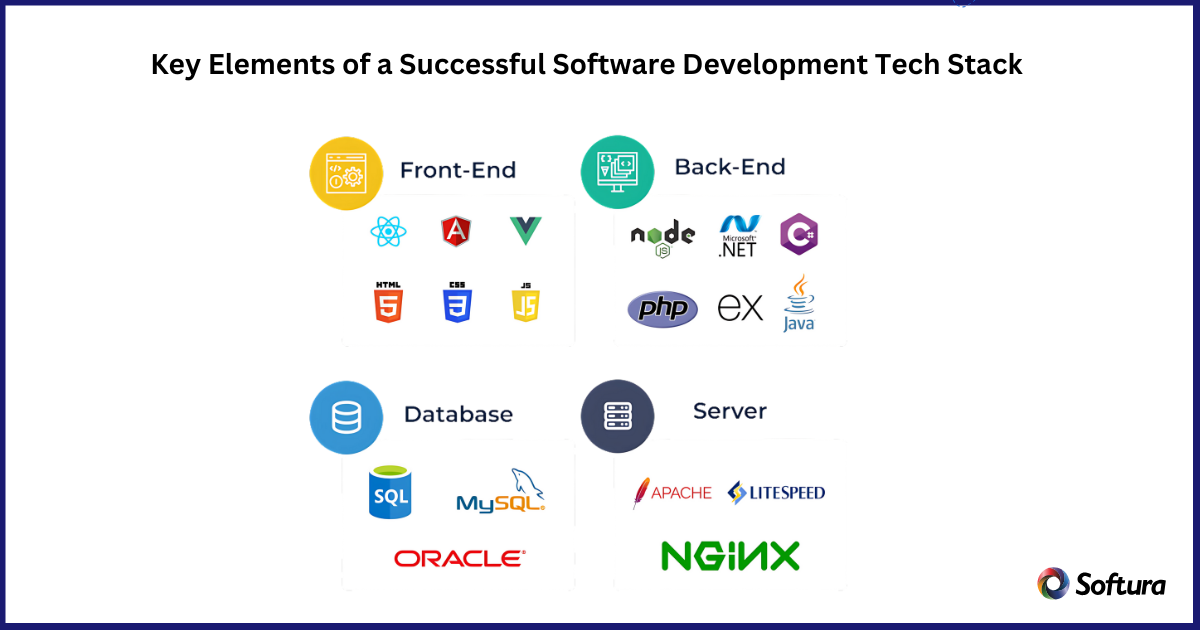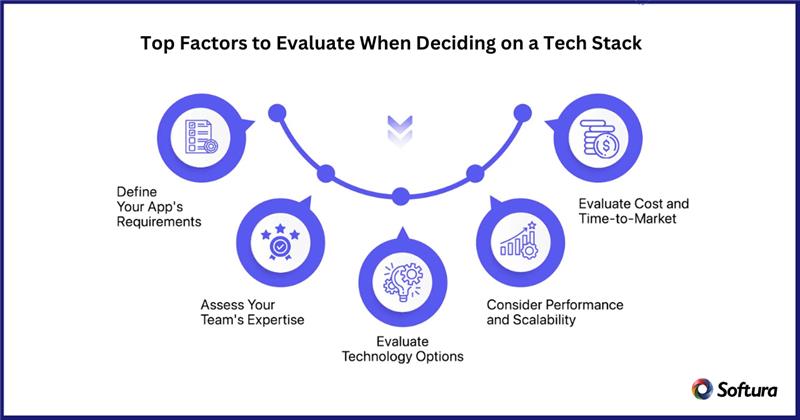"Our integration with the Google Nest smart thermostats through Aidoo Pro represents an unprecedented leap forward for our industry."
- Antonio Mediato, founder and CEO of Airzone.
You might find it really tough to connect your software application development efforts with your business goals. Choosing the right software development tech stacks is a big part of this struggle. If things don’t align, you could end up wasting time and money and projects might not deliver the value you need. The tech stack isn’t just a technical detail.
It’s a choice that can either push your business ahead or hold it back. With so many programming languages, frameworks, libraries, and tools available, making the right pick feels overwhelming. This guide will help you understand the key components of tech stacks.
Additionally, you will learn the greatest choices for 2025 and investigate what elements are really essential for deciding which direction your company should go. Prepare yourself to travel an interesting path that might alter your attitude to software development and equip you for future success.
Imagine having a single platform that manages documents, automates workflows, and enhances collaboration across departments. That’s what software development enables.
A software development tech stacks refers to all the different technologies brought together to build it. It covers things like programming languages, tools, libraries, frameworks, and systems used on both the frontend and backend. You could think of it as a toolkit for software creation. The tech stack is basically made up of everything from the code you write to the systems that support it behind the scenes, frontend, backend—all included.

The tech stack you choose impacts:
Maintaining competitiveness by 2025 means using the right tools for the right task; yet, with so many options, selecting a stack that meets performance, cost, and long-term sustainability is very essential.
"Our integration with the Google Nest smart thermostats through Aidoo Pro represents an unprecedented leap forward for our industry."
- Antonio Mediato, founder and CEO of Airzone.
Every tech stack consists of frontend (client-side) and backend (server-side) components. Let’s check out these fundamental aspects together.
The frontend controls everything a user sees and interacts with. Providing a perfect, clear user interface takes the stage here.
The backend powers the application's core logic, handles database queries, and ensures that the front-end gets the correct data.
Databases are crucial for managing data in applications. Your database choice should be guided by the type and complexity of data your application controls.

"By analyzing the data from our connected lights, devices and systems, our goal is to create additional value for our customers through data-enabled services that unlock new capabilities and experiences."
- Harsh Chitale, leader of Philips Lighting’s Professional Business.
Here, we carefully examine the top software development tech stacks that will remain dominant in 2025. Different groups are better at different tasks. It might be easier to choose the best one for your needs if you know what's good and bad about each one.
The MERN stack is a complete JavaScript solution. It has Node.js, MongoDB, Express.js, and React.js. All of these tools work together to make a strong full-stack solution. There are a bunch of JavaScript tools that work together. People use it a lot because it helps them work with JavaScript on both the front end and the back end.
Use Cases: Ideal for building dynamic single-page applications (SPAs), social media platforms, eCommerce sites, and real-time apps. Starting a business, you’ll find that the MERN stack offers a flexible solution for complete-stack JavaScript needs, making it a popular choice among startups for effective application development.
The MEAN stack is another full-stack JavaScript-based stack that is similar to MERN but uses Angular instead of React (MongoDB, Express.js, Angular, Node.js). Angular helps the app development process's structure and concentration to be better.
Use Cases: Great for real-time applications like collaboration tools, dashboards, and project management tools, where dynamic interaction is key.
Together, Linux, Apache, MySQL, and PHP form the LAMP stack. Typically utilized in web development, this stack is among the most reliable and widely used one accessible. Many long-standing initiatives start first with their dependability and open-source nature.
Use Cases: Best suited for blogs, small websites, and content management systems (CMS) like WordPress. It’s a budget-friendly choice, making it perfect for small businesses or companies that require minimal maintenance.
Today, JavaScript, APIs, and Markup (JAMstack) are used to separate the front end and the server in web development. This is done to make it faster and easier to scale. It is important to focus on static files that are made at runtime and sent over a content delivery network (CDN).
Use Cases: perfect for websites that value scalability, security, and performance. When speed and security are very important, JAMstack is often used for eCommerce sites, blogs, and galleries.
A serverless stack allows developers to build applications without worrying about managing infrastructure. Serverless architectures are powered by cloud providers like AWS Lambda, which execute code on-demand without provisioning servers.
Use Cases: Ideal for applications with variable workloads, such as real-time data processing, IoT apps, or event-driven functions. Serverless designs handle growth, which cuts down on costs and lets writers focus on writing code instead of controlling servers.
Looking for Offshore Dedicated Developers?
Our skilled experts are ready to help. Let's discuss your automation needs.
"By analyzing the data from our connected lights, devices and systems, our goal is to create additional value for our customers through data-enabled services that unlock new capabilities and experiences."
- Harsh Chitale, leader of Philips Lighting’s Professional Business.
There are several factors that can influence your choice of tech stack for 2025. Beyond the technologies themselves, think about the project requirements, team expertise, and future scalability.
Certain kinds of projects are better suited for certain tech stacks. For instance, a small startup website might be fine with LAMP, while a more complex, data-heavy application might benefit from the scalability of MERN or MEAN.
Selecting a tech stack should be based on the skills of your team. It doesn't matter how popular a stack is; if your team doesn't know how to use it, training will take longer and cost more.
Since each tech stack is different, it costs to set them up. It could be very different how much rights cost and how long it takes to build something. An open-source system like LAMP or MERN could be a really cheap option. It might cost more to use a new method, but it will be worth it in the long run.
Setting up different tech stacks costs different amounts of money for different reasons. It could be very different how much rights cost and how long it takes to build something. An open-source system like LAMP or MERN could be a really cheap option. It might cost more to use a new method, but it will be worth it in the long run.

"By analyzing the data from our connected lights, devices and systems, our goal is to create additional value for our customers through data-enabled services that unlock new capabilities and experiences."
- Harsh Chitale, leader of Philips Lighting’s Professional Business.
The tech stacks that are used to make software change as technology does. As 2025 approaches, keep these important trends in mind.
Artificial intelligence (AI) and machine learning (ML) technologies are increasingly being integrated into tech stacks, allowing applications to analyze vast amounts of data, make predictions, and automate processes.
With the rise of low-code and no-code platforms, it's getting easier for people who aren't coders to make apps. But even though these platforms work well for easy apps, you will still need standard development tools for unique software.
Microservices and serverless computing are becoming more popular because they make it easier for apps to grow and require less control of the infrastructure. Microservices design breaks up big apps into smaller ones that can be deployed on their own, giving you more options.
It's very important that you pick the right tech stack for your software development job. We at Softura have been helping businesses choose and use the right tools for years. Whether you’re building a new app or modernizing an existing one, our team of experts will guide you through the process to ensure your project thrives in 2025 and beyond. Contact us today to start building your next big idea with the best tech stack for your needs.
The right tech stack for your project will rely on its needs, the skills of your team, and your long-term goals. With these trends and choices laid out for you, you'll be better able to make a choice.
Are you ready for your next project?
Unlock your company's full potential with our comprehensive Software application development services. Contact our experts today to discuss how we can drive your success together.